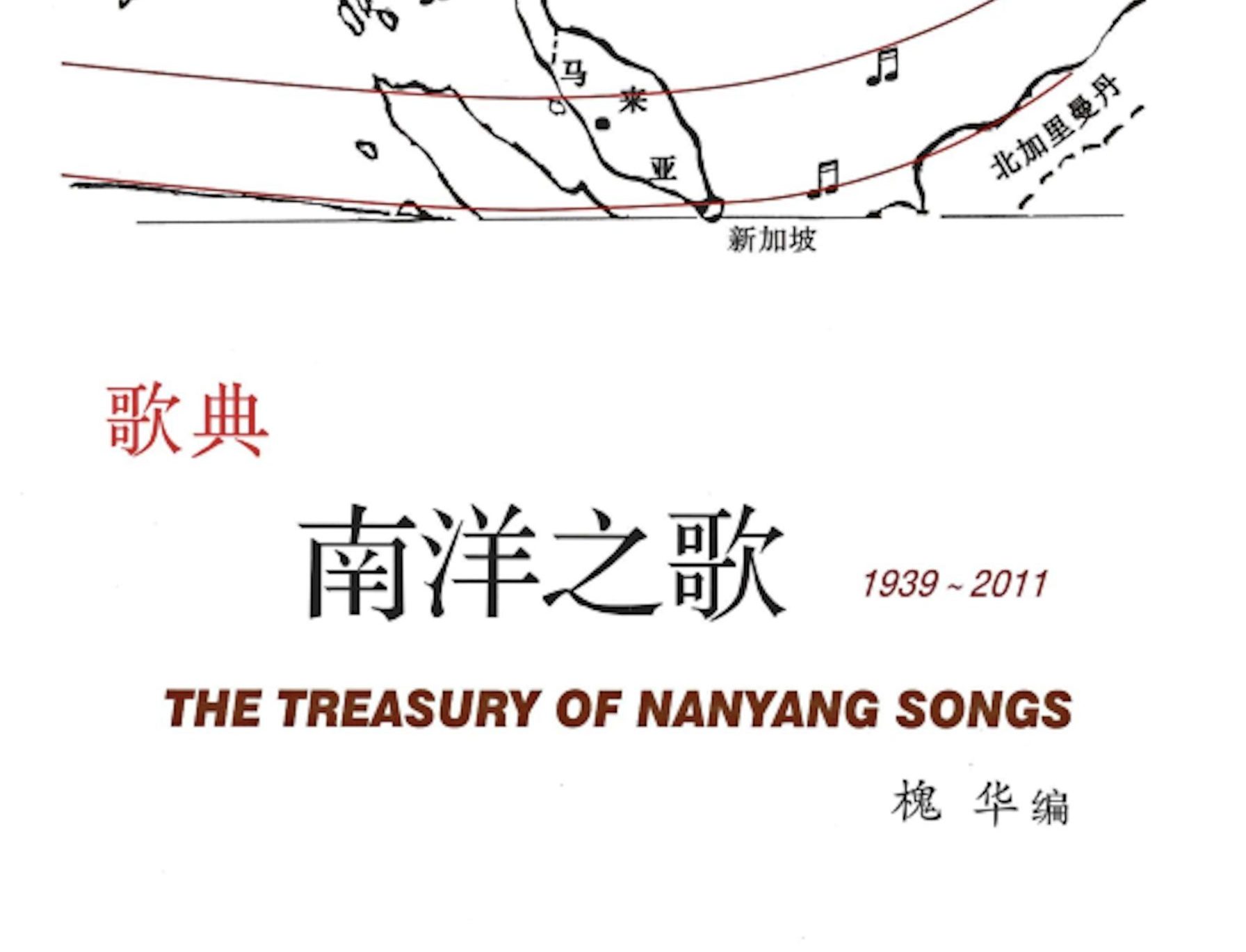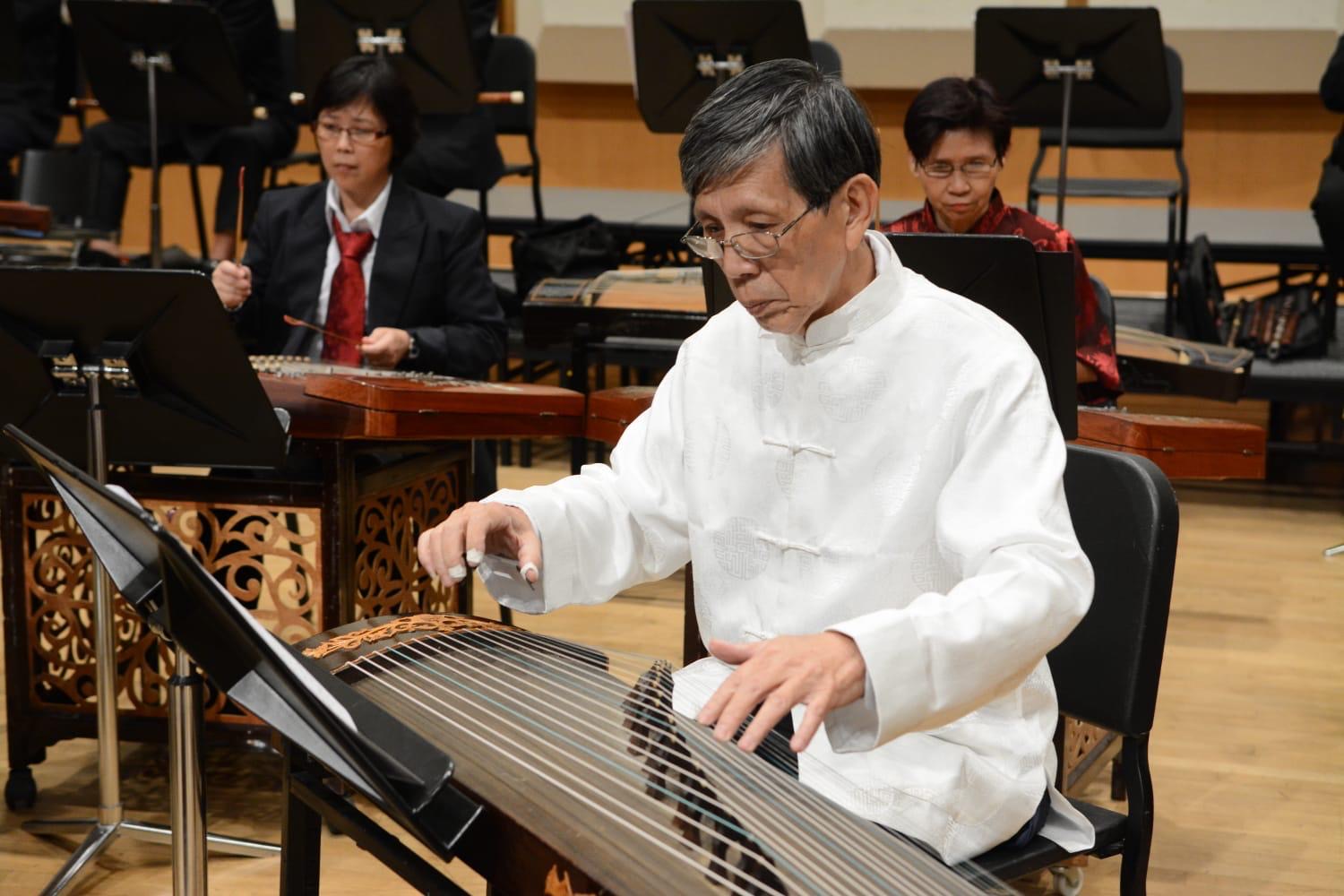Teochew music in Singapore
Originating from the ancient music of the Tang and Song dynasties in the central plains of China, Teochew music was brought to the Chaoshan region by the aristocratic clans (shizu) from the central plains. During its development, it interacted and merged with various local opera and folk music styles such as Kun opera, Waijiang Opera, also known as Han opera,1 and Zhengzi Opera. Throughout its development, it retained the simple, elegant characteristics of ancient Central Plains music. During the late Qing dynasty, with the migration of the Teochews, Teochew music spread to Southeast Asia, including Singapore.2
Instruments and music notation
Singapore Teochew music includes not only the singing of opera and the chanting of funeral scriptures in charitable halls during funerals, but also instrumental music performances, and the playing of gongs and drums in parades. Teochew music can be broadly categorised into outdoor and indoor music, according to where it is performed. Outdoor music includes Teochew flower lantern drum and gong ensemble (Chaozhou huadeng luogu), dua low koh (da luogu), eight-tone drumming (bayin luogu), Waijiang gong and drum, and the small drum. Indoor music includes Teochew string music (Chaozhou xianshiyue), ancient flute music (ditao guyue), and chamber music (xiyue).
Teochew music is traditionally notated using the two-four system tablature (ersi pu), a unique, ancient form of musical notation. The distinct character of Teochew music is derived from its unique tonal system, with emphasis on the seventh and fourth notes, as well as special scales like the zhongsanliu mode (zhongsanliu diao) and the qingsanliu mode (qingsanliu diao). Teochew music’s core melodies become more varied and expressive through techniques such as adding and subtracting musical notes, embellishments, and variations.3


Teochew string music primarily consists of the erxian, a bowed instrument with two strings; the yehu, a coconut-shell bowed string instrument; the pipa, a Chinese lute; the guzheng, a Chinese plucked zither; the sanxian, a three-stringed Chinese lute; the dayehu, a large coconut-shell bowed-string instrument; and the ruan, a Chinese lute with four strings.
In larger ensembles, percussionists playing wooden clappers and other small percussion instruments may be added. One of the most famous repertoires in Teochew chamber music is the Chaozhou xianshi shi da tao (Ten Suites of Teochew Chamber Music), which includes Jingshang tianhua (Adding Flowers on the Brocade), Pingsha luoyan (Wild Geese Descending on the Sandbank), Fengqiu huang (Courtship), Zhaojun yuan (Lady Zhaojun’s Lament), Hanya xishui (Jackdaws Playing in the Water), Xiao taohong (Little Peach Red), Yue’er gao (High Moon), Yu lianhuan (Jade Interlocking Rings), Huangli ci (Oriole Lyrics), and Da baban (Grand Eight Beats).
Teochew opera and Teochew music are closely intertwined. Teochew opera uses a labelled melody (qupai) to compose scripts, and Teochew opera’s traditional labelled melody plays an important role in Teochew music. Some important labelled melodies include Shanpo yang (Mountain Sheep), Zaoluo pao (Black Robe), Meng hudie (Butterfly Dream), and Shiliu hua (Pomegranate Flower).
Teochew opera orchestras are divided into two forms of musical expressions called wenpan and wupan. Wenpan primarily consists of melodic instrumental ensembles from string music, while wupan consists of percussion instruments like gongs and drums, accompanied by wind instruments such as the suona and large flutes.4
Amateur music groups
Before Singapore’s independence, there were four active amateur Teochew music societies, the Er Woo Amateur Musical and Dramatic Association, founded in 1912, the Lak Aik Amateur Musical and Dramatic Association, founded in 1929, the Thau Yong Amateur Musical Association, founded in 1932, and the Chenh Hua Amateur Musical Association, founded in 1935. Among them, the Er Woo Amateur Musical and Dramatic Association, established by Teochew businessman Chen Zili (unknown–1943), was the first Teochew music society in Singapore.
Chen had previously organised music societies in his hometown, and was proficient in various musical instruments, particularly the guqin, a traditional Chinese zither-like instrument. He was passionate about Waijiang opera (Han opera) which was popular among the Teochew literati. After coming to Singapore, he gathered like-minded individuals at his shop on Keng Chew Street (Keng Cheow Street), where they studied Waijiang opera music together. This led to the establishment of the Er Woo Amateur Musical and Dramatic Association.
The club members were primarily businessmen who aimed to cultivate themselves and enhance their appreciation of the arts.5 The members of the Er Woo Amateur Musical and Dramatic Association held Confucius in high regard, and worshipped him within the society. They regarded Waijiang opera and Waijiang music as “elegant and proper music”, setting them apart from professional opera troupes and performers. This distinction gave them space to explore traditional Chinese opera string music, which ultimately solidified their leadership position within the local Teochew music community.6
Er Woo’s activities were divided into two parts, music and traditional opera. They had more musicians than actors, and it was the view that these amateur members had a deeper understanding of traditional opera and music than the professionals themselves. In 1960, the Er Woo Amateur Musical and Dramatic Association launched their first reformed version of a Han opera, Niulang zhinü (The Cowherd and the Weaver Girl).7
After Singapore’s independence, the popularity of Waijiang opera gradually declined, and gave way to the rising trend of film music, which included Teochew opera films. Local music clubs also shifted from performing Han opera to Teochew opera.8
Some important Teochew musicians in Singapore were Lin Rulie (1906–1981), Yeoh Liew Kung (1912–2004), and Yeo How Jiang (1928–2017). These senior musicians often came together to make music in their free time, not only as a recreational activity, but also as a way to strengthen their social bonds.
The international exchange of Teochew music in Singapore primarily relied on grassroots efforts. During annual celebrations organised by local Teochew opera troupes, overseas professional Teochew music masters were invited to perform in Singapore, including Zheng Shengli, Li Xianlie, and Cai Jianchen. Local musicians would gather with these teachers outside of working hours to enjoy music and share playing techniques, aiming to improve their own performance skills and contribute to the development of Teochew music in Singapore. For instance, Thau Yong Amateur Musical Association not only had a few of their own musicians perform during these events, but also hired professional musicians from abroad or musicians from local Teochew charity halls (shantang) to accompany them.
There are currently three active Teochew music groups in Singapore — Thau Yong Amateur Musical Association, Kityang Huay Kwan Teochew Ensemble, and Pho Leng Hui Kuan Teochew Music Ensemble. These three groups, which are among the few remaining historical amateur Teochew music groups in Singapore, consist of around 10 musicians who move between the groups to perform. Other Teochew groups such as the Er Woo Amateur Musical and Dramatic Association and the Nam Hwa Opera focus primarily on opera performances.
This is an edited and translated version of 新加坡潮州音乐. Click here to read original piece.
| 1 | Waijiang opera, also known as Han opera, was officially named Guangdong Han opera in China in 1956. It originated from the regions of Hubei, Hunan, and Jiangxi in the late Qing dynasty and was later introduced to the Hakka and Teochew areas in Eastern Guangdong. Han opera made its way to Singapore with Teochew immigrants. Before the mid-1960s, Teochew communities in Singapore were very enthusiastic about Han opera. The Hakka community also had Han music organisations, and even released Han opera records. Organisations set up by Teochews, such as Er Woo Musical and Dramatic Association, Lak Aik Amateur Musical and Dramatic Association, Thau Yong Amateur Musical Association, and Chenh Hua Amateur Musical Association; and organisations set up by the Hakkas like Nanyang Hakka Federation Han Music Ensemble, were actively involved in Han opera performances, both in their regular musical activities and during community celebrations. |
| 2 | Chen Tianguo and Su Miaozheng, Chaozhou yinyue [Teochew music], 7–15. |
| 3 | Chen Tianguo and Su Miaozheng, Chaozhou yinyue, 26–31. |
| 4 | Su Qiaozheng, “Chaozhou ersi pu tanyuan, lun chaozhou de gupu, gudiao, guzheng” [Exploration of Teochew’s Ersi Musical Notation: On the Teochew’s Ancient Scores, Ancient Tunes, and Ancient Zither], Music Research, No. 3 (1994), 60. |
| 5 | Yap Wee Cheng, Xinjiapo chaozhou yinyueshe yanjiu [A study on Teochew music clubs in Singapore], 15–17. |
| 6 | Yap Wee Cheng, Xinjiapo chaozhou yinyueshe yanjiu, 28. |
| 7 | Wong Chin Soon, Shuo liyuan hua getai [About Liyuan opera and getai], 31. |
| 8 | Wong Chin Soon, Shuo liyuan hua getai, 24–29. |
Chen, Tianguo and Su, Miaozheng. Chaozhou yinyue [Teochew music]. Guangzhou: Guangdong renmin chubanshe, 2004. | |
Chen, Tiang Chaozhou xianshi quanji [Complete collection of Teochew string music]. Guangzhou: Guangdong huacheng chuban she, 2001. | |
Chen, Xuexi et al, eds. Chaoju chaoyue zai haiwai de liubo yu yingxiang [The spread and influence of Teochew opera and Teochew music overseas]. Beijing: Zhongguo xiju chubanshe. 2010. | |
Chung Hwa Book Co., ed. Chaoju wanquan guanshang shouce [A complete guide to Teochew opera appreciation]. Hong Kong: Chung Hwa Book Co., 2021. | |
Su Zhangkai, ed. Chao sheng liuying: xinjiapo chaozhou xiqu huiyibu [Pictorial history of Teochew opera in Singapore]. Singapore: Nam Hwa Opera Limited, 2016. | |
Su Zhangkai, ed. Chao ying xun ji: xinjiapo chaoju lishi jilu [Imprints in time: the history of Teochew opera in Singapore]. Singapore: Nam Hwa Opera Limited, 2018. | |
Wong, Chin Soon. Shuo liyuan hua getai [About Liyuan opera and getai]. Singapore: Hainanese Cultural Society of Singapore, 2015. | |
Yap, Wee Cheng. Xinjiapo chaozhou yinyueshe yanjiu [A study on Teochew music clubs in Singapore]. Master’s thesis, Department of Chinese Studies, National University of Singapore, 2000. |










